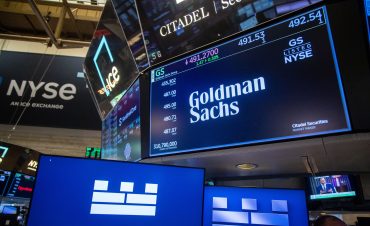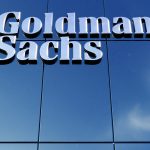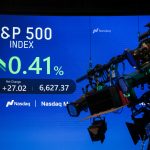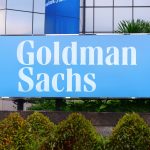
- Asset Management
- Earnings Season
- Financial Services
Goldman Sachs Reports 20% Q3 Revenue Surge Amid Market Strains
5 minute read

Discipline, diversification, and record inflows define Goldman Sachs’ standout third quarter as the bank strengthens fee-based revenue and balances market volatility
Key Takeaways
- Goldman Sachs’ Q3 2025 revenues reached $15.18 billion, a 20 percent year-over-year rise, reflecting disciplined execution amid tariff tensions and monetary policy uncertainty.
- Asset & Wealth Management surged 17 percent to $4.40 billion, with $79 billion in net inflows signaling a structural pivot toward resilient, fee-based revenue streams.
- Strategic acquisitions including the $965 million Industry Ventures transaction fortify alternatives exposure, targeting $300 billion in private credit by 2028 while reducing dependence on cyclical banking fees.
Introduction
In an era when global capital markets contend with geopolitical fractures and monetary policy recalibration, Goldman Sachs has delivered a third quarter that speaks less to exuberance than to institutional discipline. The quarter ended September 30, 2025, produced net revenues of $15.18 billion—a 20 percent advance from the prior year and 4 percent ahead of Q2—alongside net earnings of $4.10 billion and diluted earnings per share of $12.25.
These figures extend year-to-date revenues to $44.83 billion, up 13 percent, while sustaining a 14.6 percent return on equity. In markets that reward patience over opportunism, Goldman’s performance articulates a deeper thesis: true momentum accrues not from spectacle, but from the architecture of endurance.
Key Developments
The quarter’s momentum resided in its segments, where familiar engines delivered with calculated efficiency. Global Banking & Markets, commanding $10.12 billion and representing 67 percent of total revenues, rose 18 percent year-over-year. Investment banking fees vaulted 42 percent to $2.66 billion, driven substantially by advisory revenues of $1.40 billion—a 60 percent gain attributable to large-scale technology and healthcare transactions. The backlog remains elevated from year-end 2024 yet stable from mid-year, suggesting sustained activity rather than temporary surge.
Fixed income produced $3.47 billion, a 17 percent rise, with intermediation revenues reflecting strength in interest rate products and mortgages despite currency headwinds. Equities generated $3.74 billion as financing revenues surged 33 percent to $1.72 billion—margin lending being the principal catalyst—while intermediation slipped 9 percent on subdued derivatives volumes. The contrast reveals the firm’s capacity to extract returns from balance sheet deployment even as trading volatility remains muted.
Asset & Wealth Management offers the quarter’s most compelling narrative. Revenues reached $4.40 billion, accelerating 17 percent year-over-year and 16 percent sequentially, a marked departure from the first half’s 4 percent growth rate. Assets under supervision climbed to $3.45 trillion, incorporating $79 billion in net inflows and $80 billion in market appreciation. Alternatives assets under supervision reached $374 billion, now anchoring 29 percent of total revenues—up from 25 percent in the first quarter—as clients seek private yields amid sovereign bond volatility.
The balance sheet expanded with intent: total assets reached $1.81 trillion, deposits grew 5 percent to $490 billion, and global core liquid assets averaged $481 billion, supporting a supplementary leverage ratio of 5.2 percent. Common equity Tier 1 capital held at 14.4 percent, while value-at-risk declined to $91 million and provisions for credit losses fell 15 percent to $339 million. Operating expenses climbed 14 percent to $9.45 billion, yielding a year-to-date efficiency ratio of 62.1 percent—improved from 64.3 percent in 2024. Capital deployment remained assertive: $3.25 billion returned through repurchases and dividends, with year-to-date returns totaling $17.9 billion.
Market Impact
These figures ripple through the broader financial landscape with quiet significance. Net interest income’s expansion to 25 percent of revenues from 19 percent at year’s outset establishes a bulwark against trading volatility as peers contend with deposit flight and yield curve inversions. The advisory surge underscores Goldman’s gravitational pull in an M&A environment where competitors report backlog erosion.
In alternatives, $79 billion in quarterly inflows eclipse industry averages, drawing capital from public equities amid economic scenarios projecting baseline GDP growth of 1.9 percent for 2025, shadowed by adverse stress tests modeling peak unemployment at 7.4 percent. Yet a 26 percent loan concentration in technology and media warrants scrutiny: sector-specific volatility could amplify provisions beyond current levels. For markets broadly, Goldman’s stability—manifested in declining value-at-risk and $481 billion in core liquid assets—anchors liquidity during periods of trade policy uncertainty.
Strategic Insights
September’s strategic transactions crystallize the firm’s positioning. The $965 million acquisition of Industry Ventures adds $7 billion in venture capital assets under supervision, integrating secondary funds and co-investment capabilities into the alternatives platform. This advances Goldman’s stated ambition to reach $300 billion in private credit by 2028 while diversifying beyond banking fees, which comprised 18 percent of Q3 revenues.
Concurrent with this, the September 4 collaboration with T. Rowe Price commits up to $1 billion for hybrid public-private solutions targeting retirement and wealth channels, combining Goldman’s structuring expertise with T. Rowe’s $1.5 trillion asset base. These initiatives address a fundamental challenge: reducing reliance on volatile transaction-based revenues through systematic expansion of recurring fee streams.
Expert Opinions & Data
Management frames the quarter as “continued execution on our strategy amid dynamic markets,” per the Q3 earnings release. CEO David Solomon has characterized such positioning as “building for the long term,” with alternatives identified as a “core growth engine.” CFO Denis Coleman emphasizes balance sheet “resilience,” noting the Common Equity Tier 1 buffer at 14.4 percent while the 15 percent decline in provisions reflects “seasonal credit normalization.”
The data supports this narrative: return on equity has tempered from Q1’s 16.9 percent to 14.6 percent year-to-date—a deliberate moderation rather than deterioration. Economic scenarios incorporated into the $4.54 billion loan loss allowance maintain 129 percent coverage of nonaccrual loans, affirming an institution provisioning for uncertainty while capitalizing on present opportunities.
Conclusion
Goldman Sachs’ third quarter articulates not conquest but conviction—an institution mapping durability where competitors chase quarterly volatility. With revenues diversified, alternatives ascending to 29 percent of the mix, and $17.9 billion in capital returned year-to-date, the firm stands fortified. Net interest income now comprises a quarter of revenues, establishing stability independent of trading floors.
This is not transformation but refinement—an institution calibrating its architecture for markets that reward endurance over impetuosity. For stewards of capital navigating 2025’s crosscurrents, Goldman’s quarter offers a template: in environments shadowed by uncertainty, resilience compounds into relevance, and measured ambition outlasts theatrical gestures.








